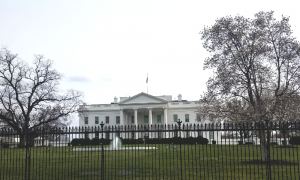
Central Bank Digital Currencies Pose Risk for U.S. Dollar
Posted on 04/07/2021
According to IMF data, since 2014, the U.S. dollar’s share of global reserve currencies has dropped by 7 full percentage points, from 66% to 59%. Starting from around 1996, the share of U.S. dollars as a global reserve currency was always above 60%. From 1978 to 1995, the ratio at times was mostly under 60%. In 1978, there was a massive plunge in the reserve currency ratio that could be linked to U.S. inflation which was at high levels, peaking at almost 15% in 1980. Keep in mind that what’s not included in global foreign exchange reserves are the Federal Reserve’s own holdings of U.S. dollar-denominated assets. The U.S. dollar’s hegemony is a key enabler for the U.S. government to increase its public debt.
The QE programs of Europe and the U.S. have indirectly helped the global reserve currency ratio balance in their favor, at least for the time being. What catalysts could change this?
Some Catalysts
In the long-term, relatively large amounts of QE from Europe and the U.S. (and less QE by China and others) could cause massive inflation, causing reserve holders to lower exposure to the currency into other assets such as other currencies, equities, high-yielding bonds, and possibly digital assets. Massive U.S. government spending, rock-bottom U.S. interest rates for a forseeable future, and a potential rise in inflation, could threaten the greenback’s status or lower it below the 60% mentioned ratio.
China renminbi’s share is still only 2.25% of global reserve currencies. This is despite the size of China’s economy and its influence. China is still trying to internationalize the renminbi.
CBDCs or Central Bank Digital Currencies
Competition from central bank digital currencies (CBDCs) could adversely affect the value of the U.S. dollar, bitcoin, and other digital assets. Central banks have introduced digital forms of legal tender. China’s CBDC project, known as Digital Currency Electronic Payment, has reportedly been tested in a live pilot program conducted in multiple cities in China. China is expected to be a first mover in CBDCs and seeks to use it around the world. A recent study published by the Bank for International Settlements estimated that at least 36 central banks have published retail or wholesale CBDC work ranging from research to pilot projects.
Keywords: Federal Reserve System.
